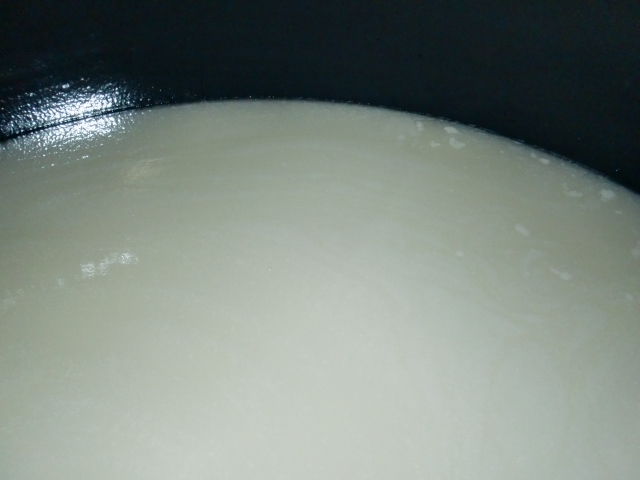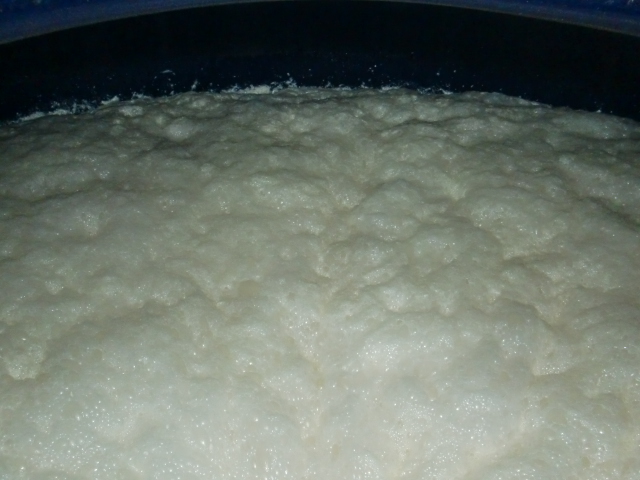Moromi
- 【English】
- Sake mash (main mash)
- 【Japanese】
- 醪
This is the name for the fermenting mass made by mashing shubo (or just yeast in the case of kobo-jikomi), steamed rice, koji and water together. Immediately after mashing, moromi is like a solid mass of swollen rice grains, but it begins to soften as saccharification proceeds. When the mash has become soft enough to allow flowing movement, it is said that the moromi has “turned” (moromi ga kaetta, 醪が返った).
In the early stages, even after a certain amount of liquefaction, the specific gravity and viscosity are extremely high, and the mash is very sweet. As fermentation proceeds, specific gravity is reduced, and the mash becomes progressively lighter (more liquid) and less sweet. For this reason, it is possible to estimate the state of fermentation by changes in sweetness and specific gravity. In the later stages, the specific gravity becomes the same as, or even lower than, water, and the liquid portion also becomes low in viscosity like water. Sweetness gives way to dry tastes from alcohol. Mature moromi is pressed (joso) to give seishu and sake kasu (compressed sake cake).
The mash prior to pressing is called doburoku or moromi-zake, and was formerly not only made in sake breweries, but also made and drunk by farmers and ordinary householders. However, home-brewing was forbidden with the establishment of Liquor Tax Law in the Meiji Period (1868-1911).

moromi

moromi awa

